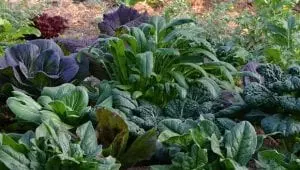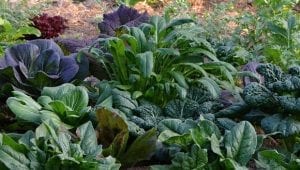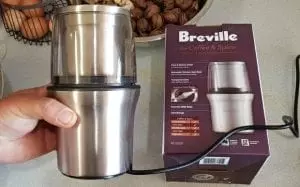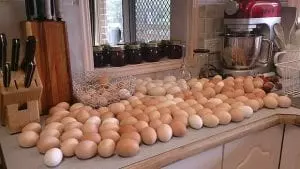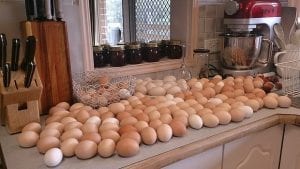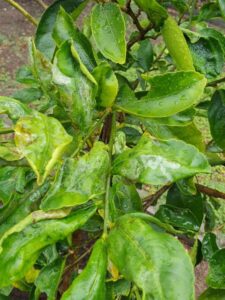‘Permaculture’ is one of those words we often see and hear when reading about gardening. It’s like some sort of mythical desert oasis…you’ve heard about it, you know it’s a good thing, but you can’t put your finger on what it really is and what it looks like in the real world.
So what is permaculture?
Permaculture is a design-based agriculture & self-sufficiency system focused on organic food production, water harvesting & soil care, all the while living in harmony with nature and making the work as easy as possible.
It’s about more than just gardening- it’s a whole way of living based on sustainable practices. It is both simple and complex at the same time, scalable to any size property, yet flexible in that you can do as much or as little of it as you like.
It has a wide scope, yet can be simple, because you can pick and choose the bits that suit you. Whether you live on a suburban block or a large rural property, permaculture can work for you. And it’s not all abstract theory: it has a set of 12 principles to guide you, then a way to put them into practice.
In this first article, I’ll detail the principles and give you a couple of easy ways to get started with permaculture. In part 2 I’ll describe the more practical aspects of permaculture.
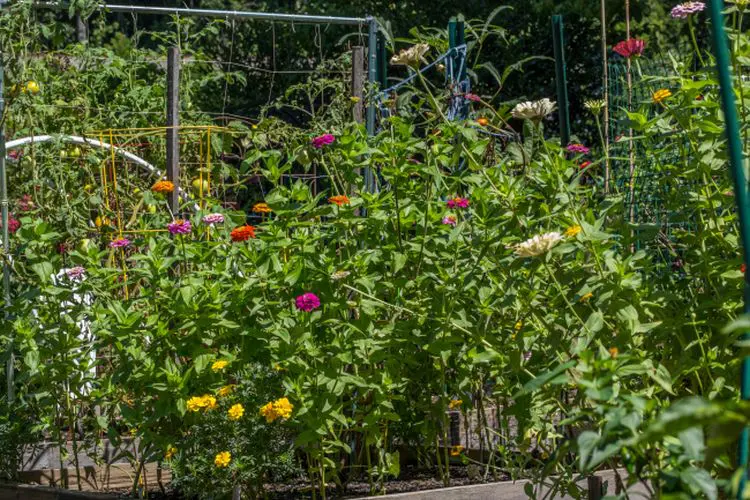
Where did permaculture come from?
Defined and so named by Australian Bill Mollison in the 1970s, the word permaculture is a contraction of ‘permanent’ and ‘agriculture’. According to Mollison, permaculture describes the harmonious integration of landscape and people, providing their food, energy, shelter, and other needs in a sustainable way.
Developed at a time when the hippie force was powerful, Mollison quickly gained a loyal following of people who realised that local actions had a far greater influence on global outcomes than ever before realised. Permaculture has had a strong following ever since, and is definitely making its way into the mainstream in recent times. Just about anything you read concerning self-sufficiency, sustainable agriculture or eco-conscious lifestyles will reference permaculture at some point.
These days, most food gardeners know something about permaculture, and may even have adopted a number of its principles and put them into practice.
But what are these principles? Lets unpack them so you can decide what works for you.
Observe and interact. Before you start any major works, look around and observe your environment. Where does the water flow? Where does the sun hit? How can you design your smallholding to work harmoniously with your microclimate? Perhaps visit a farmstay or two & see what others are doing; there’s a whole world of inspiration out there.
Catch and store energy. Energy sources like sun, wind, water and manures can be harvested and re-used. Look at what might be viable for you.
Obtain a yield. Yields can be tangible and intangible. Obviously growing food is the first thing that comes to mind, but there might be more to it than that. The joy that comes from keeping animals, the fulfilment of knowing you’ve reduced your carbon footprint, or giving children the opportunity to learn about gardening.
Apply self-regulation and feedback. Continually monitor and assess the things you buy and the way you do things on your property.
Use and value renewables. Consider powering your home with a renewable source of energy, rather than one based on fossil fuels.
Produce no waste. Self-explanatory. Something to work towards rather than doing overnight. You can make positive changes by not buying pre-packaged goods, producing food at home, composting, and buying less.
Design from patterns to details. This means, look at the patterns of your life and design your garden accordingly. For example, if you like fresh spinach in your dinner every night, place a bed of spinach near your back door for easy harvesting.
Integrate, don’t segregate. This is applicable on both a macro and micro level. Just as you can integrate your plants into guilds (beneficial groups), so can your property become part of a network of like-minded gardens. Benefit from sharing tools, skills and produce with others.
Use small and slow solutions. Probably one of the most useful tips, it basically means take one step at a time. Start small and work your way up. Go at your own pace and don’t take on too much at once.
Use and value diversity. This mostly speaks for itself, but as with everything permaculture, the diversity covers humans, plants and animals.
Use edges and value the marginal. This could be as simple as growing food plants on your nature strip, or something more abstract like thinking outside the box.
Creatively use and respond to change. Permaculture recognises that changes in life are inevitable. The designs allow for a changing climate, human needs, different seasons, and more.

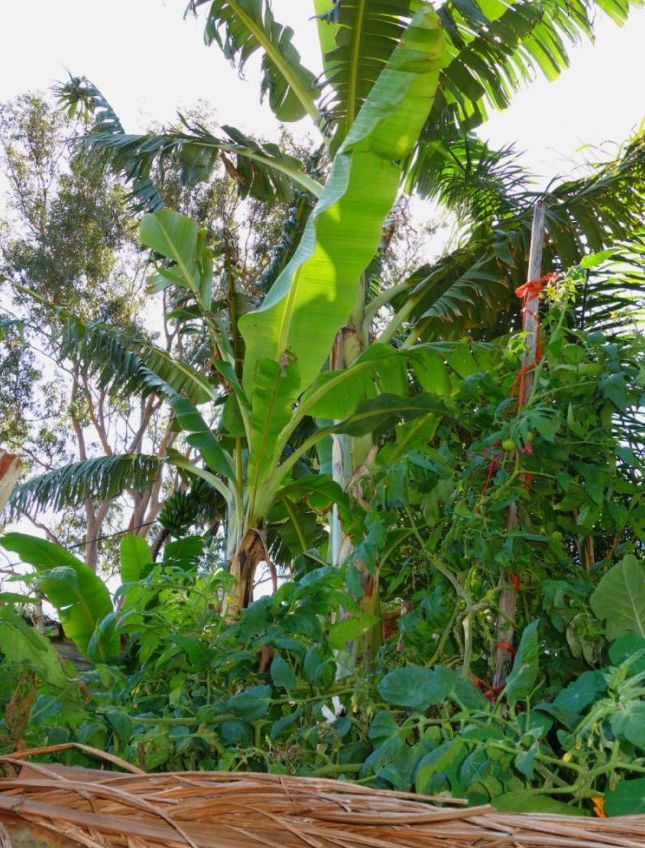
How to get Started with Permaculture
Let’s look at a couple of easy ways you can get started. In fact, you may already be following some permaculture principles without even realising!
Catching rainwater for garden use. A good place for beginners to start on permaculture. This is one easy way to follow the permaculture principle of ‘catch and store energy’. All gardeners knows the importance of a constant source of clean water for their fruit and vegetables. With our climate becoming less and less predictable, catching and storing rainwater for future use is becoming commonplace. Consider installing rainwater tanks that will take all the runoff from your roof. This water can then be used in the garden or even cleaned and recycled for household use.
Recycling your household greywater for garden use is particularly useful in times of drought. You’ll need to check with your local council for regulations and requirements. An exemplary system has been designed and installed by noted gardener Jerry Coleby-Williams in QLD, which is shown in detail on his website.
Self mulching. I also like to call this ‘using weeds to your advantage’; it’s a great example of working with rather against nature. A weed is a plant growing in the wrong place. It might be a food plant volunteer or a rampant inedible plant that produces uncomfortable seeds. It’s easy to just chop & drop these weeds then walk over them. By doing this, you’re preventing them going to seed and creating a living mulch for the plants you do want. This mulch will compost down and provide food for the soil biome, becoming a valuable addition to the plant-food cycle.

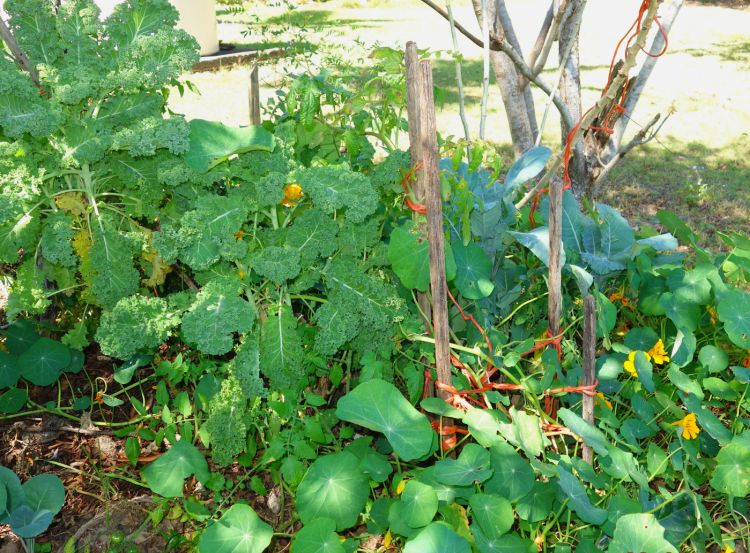
Dead or alive, weeds protect the soil, so reducing water requirements and forming a deep living mulch that makes its own microclimate above the root zone. They cool and shade the soil plus maintain a workable level of humidity. Transpiration of moisture into the air under food trees can significantly the water needs of that tree. Even if the weeds are using water themselves, there is generally a positive payoff for the food plants in the area. One ‘weed’ that certainly gives back more than it takes is the humble cherry tomato. If you aren’t worried about tidiness, cherry tomatoes make a great living mulch. Let them sprawl all over the ground and roam free.
In the photo above, you can see that I keep a variety of fresh ground covers. I let the nasturtiums and cherry tomatoes protect my more tender plants, as this bed is in an exposed position. They are growing around and over large tomatoes, a young capsicum plant, several cauliflowers, a trailing passionfruit and some kale. The live mulch was allowed to find its own growing place among the larger plants, protecting them from strong drying winds and frost. As you can see there is little damage.

